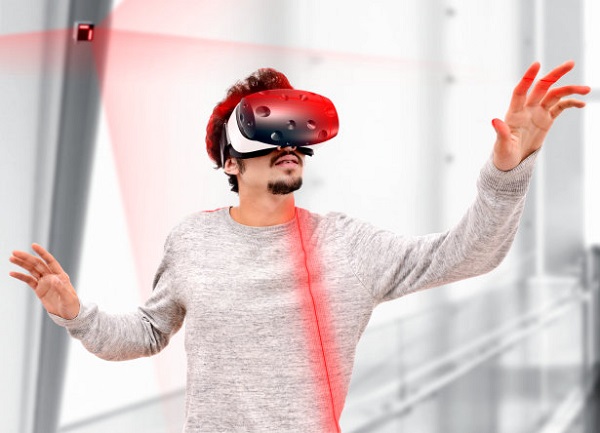Osram Opto Semiconductors introduces its first high power single mode infrared laser. With an emission wavelength of 850nm, the SPL TR85 matches both camera sensors and silicon photodetectors. The potential fields of application for the new laser include position tracking for virtual reality systems, as well as various types of 3D sensors.
 |
|
(Image: Osram) |
Virtual Reality (VR) enables users to completely immerse themselves in a virtual world and interact with it. In order to respond smoothly to the users’ actions, the VR system needs to know their positions and movements within the space as accurately as possible. Infrared sensors are commonly used to track the users. One such method is to scan the room with infrared laser light. This light is registered by the photodetectors mounted around the VR headset and on controllers. The SPL TR85 delivers sufficient optical power to scan a play area, which is a couple of meters wide and long, and also provides the right wavelength to function with standard photodetectors.
3D sensors and projected touchscreen
3D sensing is another growing consumer application for infrared lasers like the SPL TR85. These systems use sensors, which register gestures in three dimensions and allow users to interact with software systems in a most intuitive way. 850 nm lasers are a common choice as their light is almost invisible to humans but also matches the spectral sensitivity of camera sensors. The SPL TR85 is the perfect choice for time-of-flight cameras which measure the time that a laser pulse takes to travel from the light source to the object and back to the camera. As a single mode laser, the SPL TR85 also meets the requirements for another 3D sensing technology called structured light. These systems project a defined pattern of light dots onto the scenery and measure how these dots shift position as the objects move.
Infrared lasers like the SPL TR85 are also at the heart of innovative projectors, which are able to create a virtual touchscreen on any surface. To register the position of the user’s fingers on the screen, these projectors scan this area with an infrared laser beam.





 CN
TW
EN
CN
TW
EN






